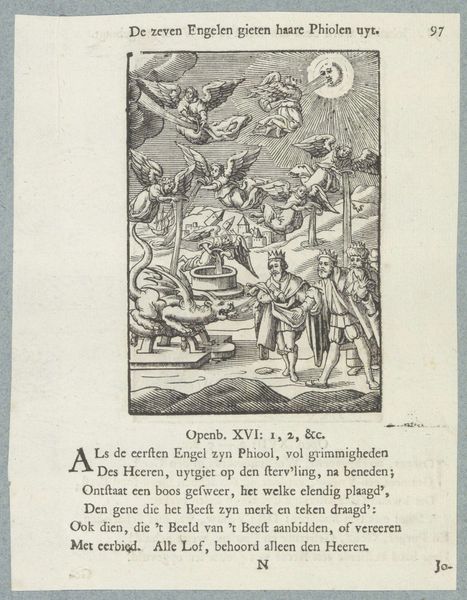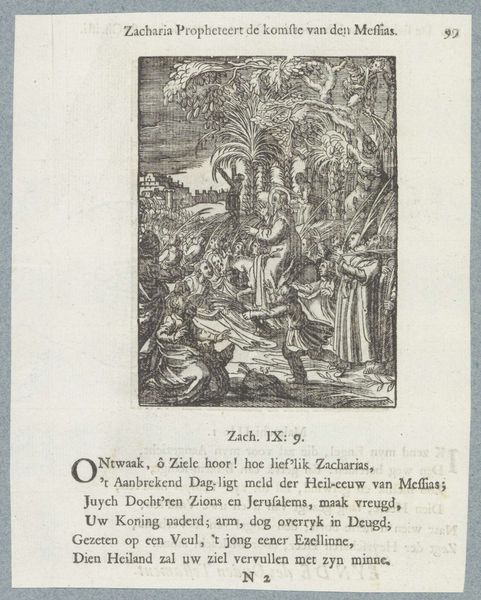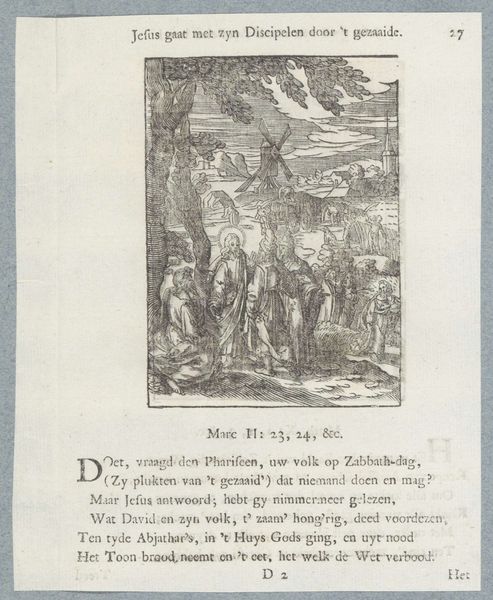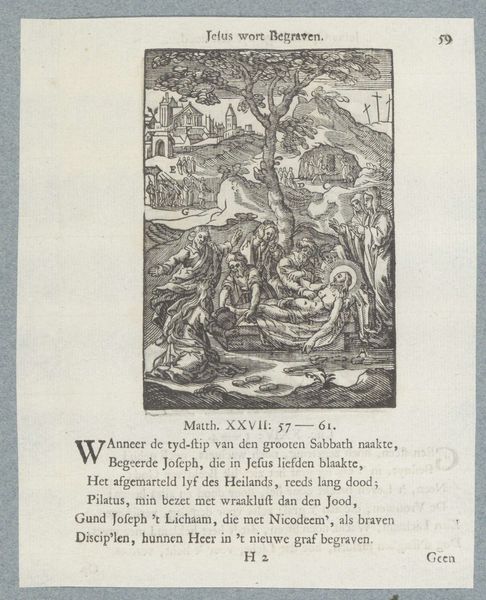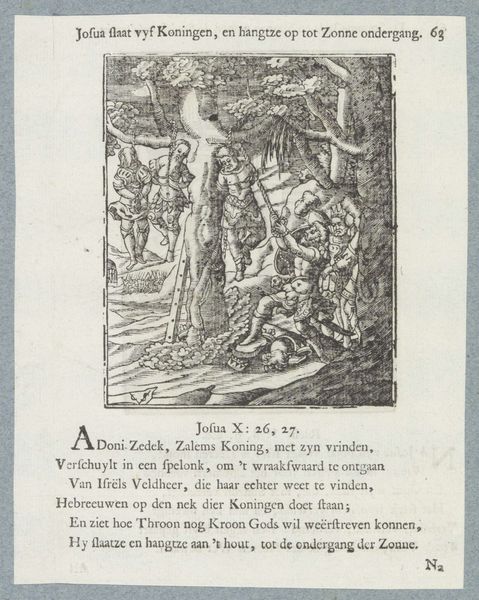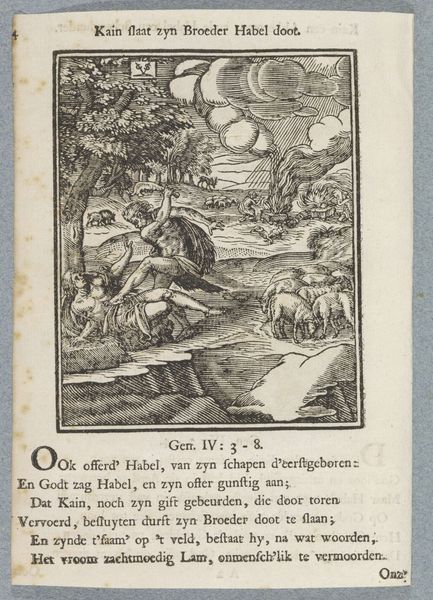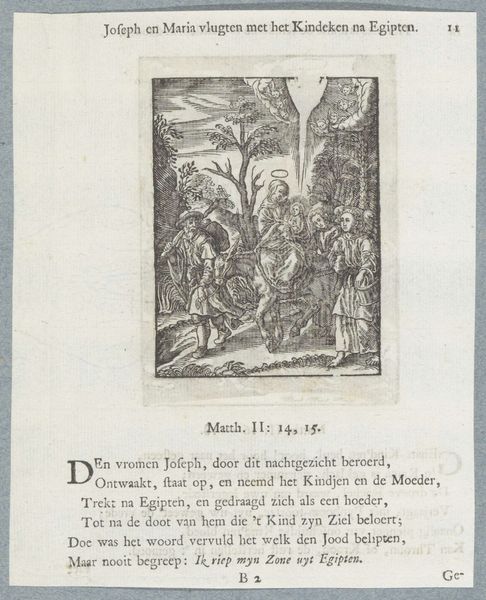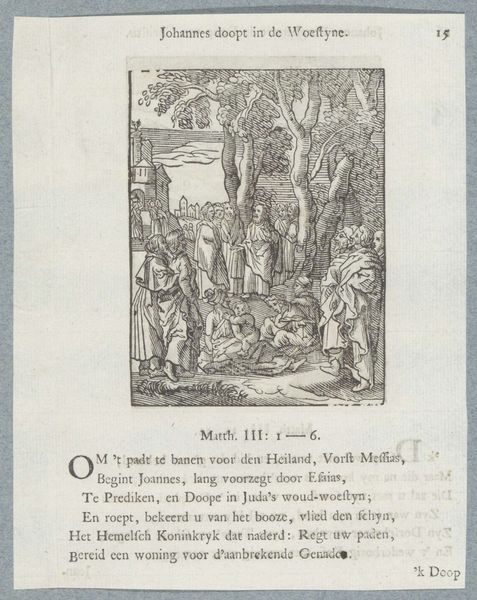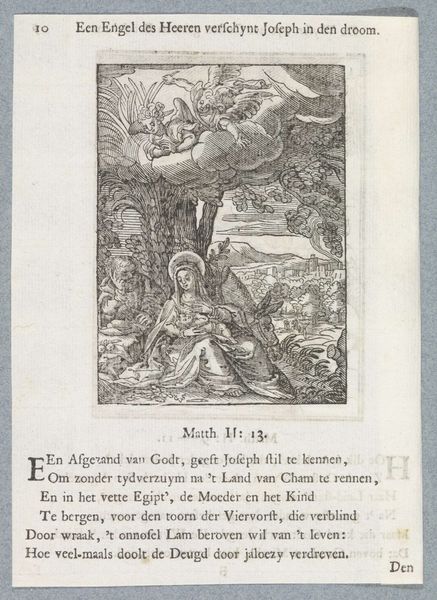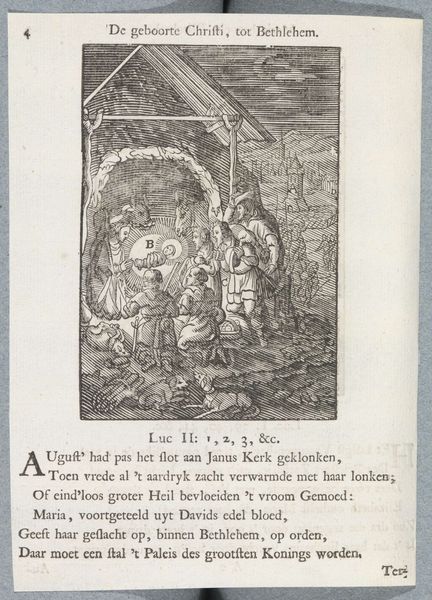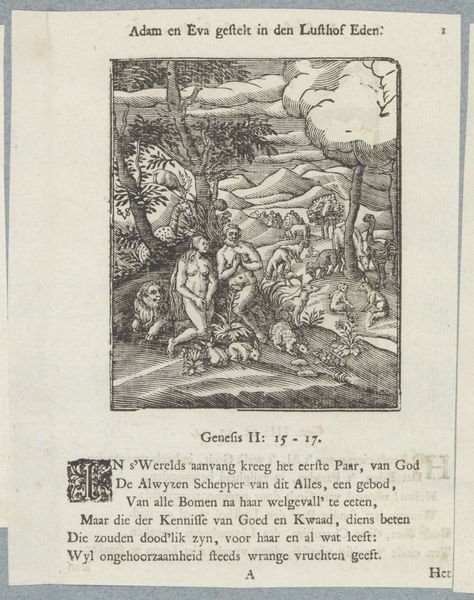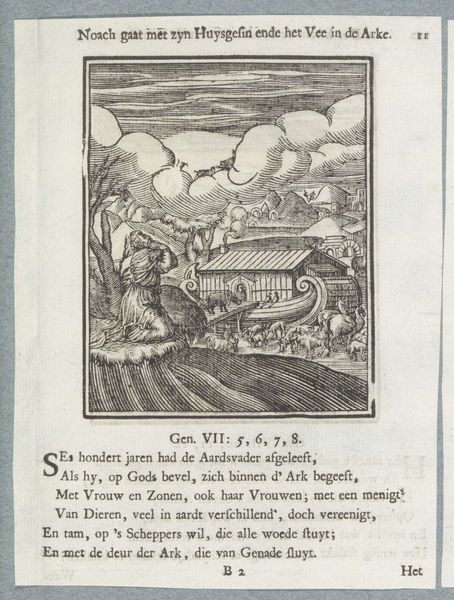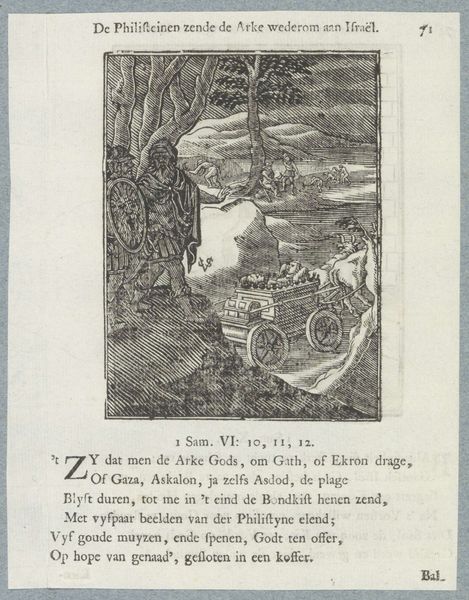
Dimensions: height 101 mm, width 74 mm, height 171 mm, width 133 mm
Copyright: Rijks Museum: Open Domain
Curator: We’re looking at Christoffel van Sichem II’s engraving, "Expulsion from Paradise," which art historians estimate was created sometime between 1645 and 1740. It’s currently held in the Rijksmuseum collection. Editor: It's all frantic energy, isn’t it? The figures feel propelled, like paper dolls caught in a gust of wind. Even the landscape seems to recoil with them, bristling with thorny discomfort. Curator: The artist certainly utilizes dynamic lines. Observe how Sichem has organized the composition along a strong diagonal axis, enhancing the sensation of instability. Note, too, the density of lines in the upper register compared to the relative openness below. This contrast seems almost deliberately orchestrated to overwhelm the viewer with the consequences of transgression. Editor: Yes, heavy is the head that wears the apple, as they say. It’s like the guilt is raining down, almost suffocating them as they flee the serenity of the garden. I wonder, do you think he felt empathy for them, or was he illustrating a straightforward morality tale? Curator: I’d suggest the work functions as an exemplum of sorts, a cautionary narrative rendered with precision and symbolic intent. Adam’s hunched posture and Eve’s averted gaze suggest an internalization of shame, elements reinforcing the didactic thrust. It also captures a transitional moment between divine favor and human failing. Editor: It’s an impressive exercise in squeezing so much drama into a relatively small space. The detail, especially in the foliage, makes me wonder about the degree of planning and control involved. It is quite different from my style of art making, so it always peaks my interest in it. Curator: Indeed, the tension between control and chaos is a key aspect of this baroque engraving. Editor: Thinking about the print now, I am reminded that paradise might be overrated. All that eternal bliss sounds boring. Curator: Perhaps a certain level of structure—formal, artistic, moral—is useful for any artistic creation. Thank you for helping to highlight this intriguing work, from a different viewpoint than I'm accustomed to.
Comments
No comments
Be the first to comment and join the conversation on the ultimate creative platform.

